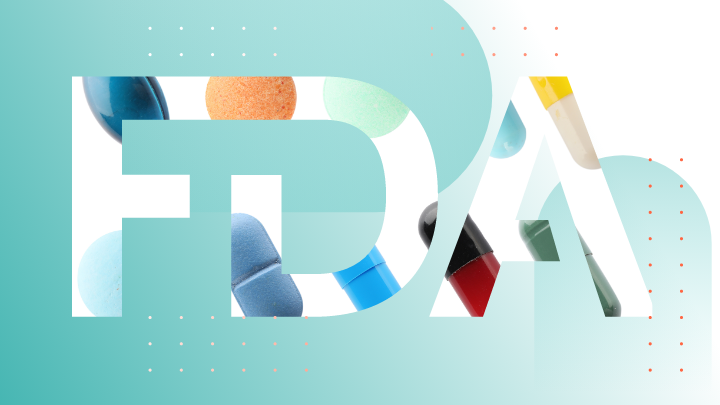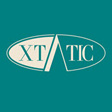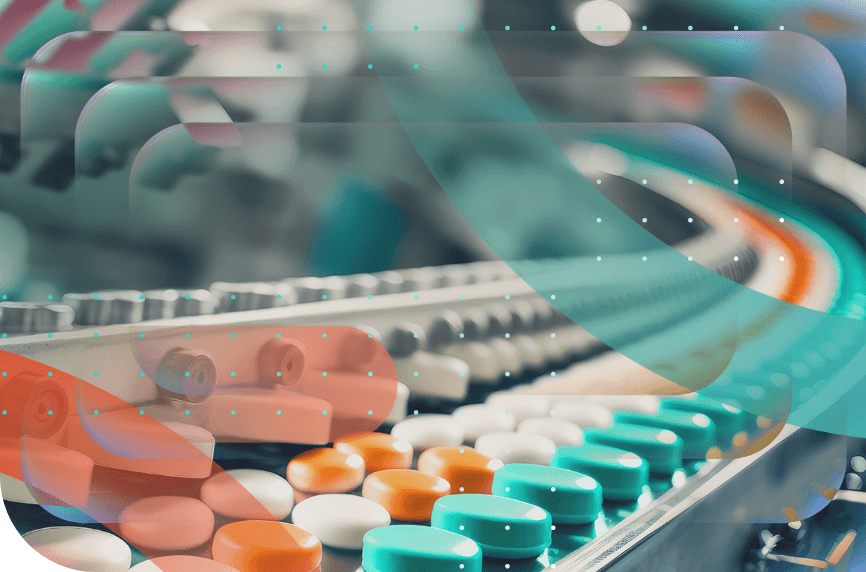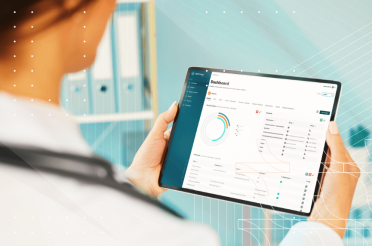Quality control is one of the fundamental aspects of the pharmaceutical industry. It is essential in ensuring the safety and efficacy of drugs, as well as maintaining the integrity of the supply chain. In an increasingly globalized world, with complex supply chains and growing demand for medicines, the importance of quality control cannot be overstated.
This article aims to deliver an overview of the importance of quality control in the pharmaceutical sector. The aspects we touch on include potential consequences of inadequate process controls, the significance of raw materials, the role of quality control in the supply chain process.
Finally, we will learn about the regulatory bodies responsible for ensuring compliance with the safety standards we explored.
The importance of quality control in the pharmaceutical industry

The potential consequences of inadequate quality control in the pharmaceutical industry are far-reaching and can have severe implications for both patients and the industry as a whole.
Poor pharmaceutical quality control can lead to the production and distribution of low-quality medicines. These can cause harmful side effects, treatment failures, and even death. In addition, the presence of counterfeit or substandard drugs can damage the reputation of pharmaceutical companies, leading to loss of consumer trust and financial setbacks.
The impact of poor quality control on patients can be particularly devastating. Patients rely on the safety and efficacy of the medicines they consume to maintain or improve their health.
When the quality assurance of these medicines is compromised, not only the health of individual patients can be harmed but also confidence in the healthcare system as a whole. Furthermore, this can result in burdens on the healthcare system due to the need to treat complications arising from the application of poor-grade medication.
Finally, poor quality control can have broader societal implications. The spread of drug-resistant infections, for example, can be exacerbated by the use of substandard or counterfeit antibiotics. This can make it more challenging for healthcare providers to treat infections and ultimately lead to increased morbidity and mortality rates over the long-term.
Checking pharmaceutical raw materials for quality

Pharmaceutical raw materials are the building blocks of the drugs that patients consume. They play a critical role in determining the safety, efficacy, and product quality. Only when these building blocks are of the desired quality can the stringent standards for patient safety be met.
Substandard raw materials can introduce impurities or contaminants into the final drug product, which can pose significant risks to patient health. Moreover, the use of inferior raw materials can result in drugs with reduced potency or stability, potentially leading to treatment failures or adverse reactions in patients.

Avoid the severe consequences of inadequate quality control
Get exclusive insights and strategies on how to improve your pharmaceutical manufacturing supply chain’s efficiency by talking to one of our software strategy experts

Therefore, quality control procedures and necessary and relevant tests on raw materials are required for the production of both safe and effective drugs
An aspect that should not be overlooked is that globalization has substantially increased the complexity of the pharmaceutical supply chain. With suppliers located in various countries, each with its own regulatory framework and quality control standards, ensuring the quality of raw materials can be challenging.
This makes it even more critical for pharma companies to establish standard operating procedures and quality management systems and work closely with their suppliers to ensure the quality of the raw materials they procure.
Types of raw materials used in pharmaceuticals

The pharmaceutical industry utilizes various types of raw materials in the production of drugs, including active pharmaceutical ingredients (APIs), excipients, and packaging materials. Let’s unpack what hides behind each of these terms.
Active pharmaceutical ingredients (APIs)
Active pharmaceutical ingredients (APIs) are the primary components responsible for the important function of therapeutically active formulations. The quality of APIs is vital to the safety and efficacy of the final product. The purity, potency, and stability of APIs must be rigorously tested to ensure they meet the required specifications.
For example, if an API has impurities or a lower potency than specified, it may not provide the desired effect, or it may cause unexpected side effects. To ensure the quality of APIs, pharmaceutical companies must adhere to strict guidelines and conduct in-process testing and finished product testing.
Some well-known examples of APIs are acetaminophen and ibuprofen that millions of people worldwide take every day for pain relief.
Excipients
Excipients are the inactive ingredients used in drug formulations to aid in the manufacturing process, enhance stability, and improve the appearance or taste of the finished products. While they do not have a direct therapeutic effect, the quality of excipients is essential to ensure the overall safety and effectiveness of the medicinal agents.
For instance, a poorly chosen or contaminated excipient may cause the drug to degrade faster, reducing its effectiveness, or may cause adverse reactions in patients.
As a result, it is crucial to perform relevant tests and ensure proper quality control on excipients to ensure they meet quality standards and are compatible with the API and other components of the drug formulation.
Commonly used excipients are lactose, cellulose, dextrose and many others. Sometimes, people can be allergic to excipients, even though they meet all safety standards. That’s why they are often mentioned explicitly on the packaging of drugs and in the patient information leaflet.
Packaging materials
Packaging materials, such as containers, closures, and labels, play a vital role in protecting and preserving the drug product throughout its shelf life. High-quality packaging materials are necessary to maintain the stability, potency, and safety of the drug and to prevent contamination or tampering.
Packaging materials should be subjected to quality control procedures to ensure system suitability for the specific drug product, and they must comply with relevant regulations. For instance, some vaccines are packaged in vials that are amber in color to protect the contents from light.
On the other hand, drugs that are toxic or pose a high risk of harm if ingested accidentally by children require child-resistant closures. For example, prescription opioids are commonly packaged in bottles with child-resistant caps to prevent accidental ingestion by children.
Other auxiliary materials
In addition to these primary categories of raw materials, the pharmaceutical industry also uses a variety of auxiliary materials, such as solvents, catalysts, and process aids, which are involved in various stages of drug production.
These materials must also undergo quality control and comply with regulatory standards to ensure they do not introduce impurities or otherwise compromise the quality of the finished product.

Master the complexities of the pharmaceutical supply chain
Tackle all the regulatory challenges by better understanding the latest quality control technologies
For instance, ethanol is a commonly used solvent in pharmaceutical manufacturing, especially in the production of liquid and semi-solid dosage forms such as solutions, suspensions, and gels.
Ethanol must meet quality standards to ensure that it is free of impurities such as methanol, which can be toxic if ingested. In addition, the concentration of ethanol must be carefully controlled to prevent adverse effects on patients, such as alcohol intoxication or irritation of the skin or mucous membranes.
Quality control and the pharmaceutical supply chain

The pharmaceutical supply chain is a complex, multi-stage process that involves various stakeholders, from raw material suppliers to manufacturers, distributors, and healthcare providers. Quality control specialists play a vital role at each stage of this process to ensure the safety, efficacy, and integrity of the final drug product.
At the raw material procurement stage, quality control measures involve inspecting and testing the materials to ensure they meet established specifications. This helps to prevent the introduction of contaminants, impurities, or substandard materials into the manufacturing process.
Companies develop robust supplier qualification and auditing processes to verify that their suppliers maintain high-quality standards and comply with relevant regulations. In some cases, this may involve conducting on-site audits or requesting third-party testing certificates for the raw materials.
During the manufacturing stage, QC departments oversee monitoring and controlling the production process, validating equipment, and verifying adherence to good manufacturing practices (GMP). By maintaining strict quality control during manufacturing, the industry can ensure that the final drug products meet the required standards for safety, efficacy, and pass stability testing.
In-process product testing, such as assay tests to measure the potency of APIs or dissolution tests to assess the rate at which the drug is released from its dosage form, can provide valuable information about the quality of the drug product and allow for corrective action to be taken if necessary.
Quality control also plays a significant role in the packaging and labeling stages of the pharmaceutical supply chain. Ensuring that packaging materials meet quality requirements helps maintain the integrity of the drug product during storage and transportation.
Accurate labeling is essential for providing healthcare professionals and patients with the correct information about drug usage, dosage, and potential side effects. To ensure the accuracy and compliance of labeling, pharmaceutical companies must establish and follow robust procedures for label design, review, and approval.
Finally, during the distribution stage, preventive actions stop the infiltration of counterfeit drugs into the supply chain and ensure the proper handling and storage of drug products. We will delve further into this in the next section, where we will learn more about the importance of regulatory guidelines.
Quality control regulations

To maintain a high level of how quality is controlled in pharmaceuticals manufacturing, various regulatory bodies are responsible for establishing and enforcing legal standards and regulations. Some of the key regulatory bodies include the United States Food and Drug Administration (FDA), the European Medicines Agency (EMA), and the World Health Organization (WHO).
These organizations have established guidelines and regulations to ensure that pharmaceutical companies adhere to strict quality control standards throughout the entire supply chain process.
The key regulations and guidelines maintained by these agencies are:
- Good Manufacturing Practices (GMP)
- Good Laboratory Practices (GLP)
- Good Distribution Practices (GDP)
- Good Clinical Practices (GCP)
Good manufacturing practices (GMP)
GMP guidelines focus on ensuring the quality, safety, and efficacy of drug products released by outlining the necessary requirements for manufacturing facilities, equipment, personnel, and processes.
These guidelines cover aspects such as the design and construction of manufacturing facilities, the qualification and training of personnel, process validation, and overall management systems. Compliance with GMP helps ensure that drug products are consistently produced and controlled according to established quality standards.
An example of GMP guidelines in action is in the manufacture of sterile injectable medications. Sterile injectable medications must be prepared under highly controlled conditions to minimize the risk of contamination by microorganisms, particles, or other impurities that could cause harm to patients.
Good laboratory practices (GLP)
GLP regulations are in play in the non-clinical laboratory testing of a new drug candidate, which involves evaluating the safety and efficacy of the drug in animal models before it can proceed to clinical trials in humans.
For example, in a preclinical study to assess the toxicity of a new drug, GLP guidelines require that the study be conducted in a laboratory that is designed and maintained in a manner that minimizes the risk of contamination or other factors that may affect the accuracy or reliability of the raw data.
The study personnel must be appropriately trained and qualified, and they must follow standard operating procedures to ensure that the study is conducted in a consistent and reliable manner. In this way, the industry can ensure that fewer laboratory errors plague the R&D process and that test results are scientifically sound.
Good distribution practices (GDP)
GDP guidelines emphasize the proper distribution and storage of drug products to maintain their quality throughout the supply chain. Compliance with GDP release procedures ensure that drug products are stored and transported under appropriate conditions, safeguarding their safety, efficacy, and stability.
Key elements of GDP include the qualification of storage facilities and transport vehicles, temperature and humidity control, inventory management, and the handling of damaged or expired products.
A recent example
One example where GDP guidelines are crucial is in the distribution and storage of vaccines. Vaccines are sensitive biological products that require proper storage and handling to maintain their safety and efficacy. Failure to follow GDP guidelines can compromise the quality of vaccines and render them ineffective or even harmful.
For instance, the Pfizer-BioNTech COVID-19 vaccine must be stored at ultra-low temperatures of -70°C to -80°C (-94°F to -112°F) until shortly before administration. The vaccine is shipped in special thermal shippers that can maintain the required temperature for up to 10 days if the dry ice is replenished every five days.
The shippers are also equipped with GPS-enabled thermal sensors to monitor the temperature and location of the vaccine during transportation.
Once the vaccine reaches its destination, it must be stored in a freezer at -70°C to -80°C (-94°F to -112°F) or in a refrigerator at 2°C to 8°C (36°F to 46°F) for up to five days. Before administration, the vaccine must be thawed and diluted with a saline solution, and any unused doses must be discarded within six hours.
Adherence to GDP guidelines is critical to ensure that not only the Pfizer-BioNTech vaccine but really all medications are safe and effective when they finally reach the patient.
Good clinical practices (GCP)
Finally, GCP guidelines outline the ethical and scientific standards for designing, conducting, and reporting clinical trials involving human subjects. Adherence to GCP helps ensure the protection of trial participants’ rights, safety, and well-being, as well as the credibility and accuracy of clinical trial data.
Key aspects of GCP include the roles and responsibilities of investigators, sponsors, and ethics committees, informed consent procedures, and data management and reporting.
Pharmaceutical companies must comply with these regulations and guidelines to maintain their licenses and continue operating. Regular inspections by regulatory authorities ensure that companies adhere to these standards, and any non-compliance can result in severe penalties, including fines, product recalls, or revocation of licenses.
The bottom line
The take-home message from all this is that the importance of quality control in pharmaceutical products cannot be overestimated.
It helps ensure the safety and efficacy of drugs, maintains the integrity of the supply chain, and ultimately protects patients from the potential hazards of substandard or contaminated medicines.
The pharmaceutical industry must continue to prioritize quality control measures at every stage of the supply chain, from the procurement of raw materials to the distribution of the final drug product. By doing so, the industry can uphold its commitment to providing safe, effective, and high-quality medicines to patients worldwide.
Regulatory bodies play a crucial role in establishing and enforcing quality control standards, and it is the responsibility of pharmaceutical companies to adhere to these regulations to protect public health. As the global demand for medicines continues to grow, the importance of quality control in the pharmaceutical industry can only increase further.
In the face of evolving challenges, such as the increasing complexity of the pharmaceutical supply chain and the emergence of novel drug delivery systems, the industry must continually adapt and innovate its quality control processes to stay ahead of potential risks.
This may involve embracing new technologies, such as artificial intelligence and sophisticated analytical methods, to enhance the detection of impurities or contaminants and streamline quality control processes. Evolved analytical procedures will be the backbone of future pharmaceutical manufacturing.

Whether you’re a startup, a Fortune 100 company or a government organisation, our team can deliver a solution that works for you.
BGO Software
Lastly, collaboration between industry stakeholders, regulatory bodies, and healthcare providers is essential in maintaining a high level of quality control across the pharmaceutical sector. By working together to share best practices, harmonize regulations, and address novel challenges, the pharmaceutical industry uphold the safety and efficacy of the medicines it produces.






